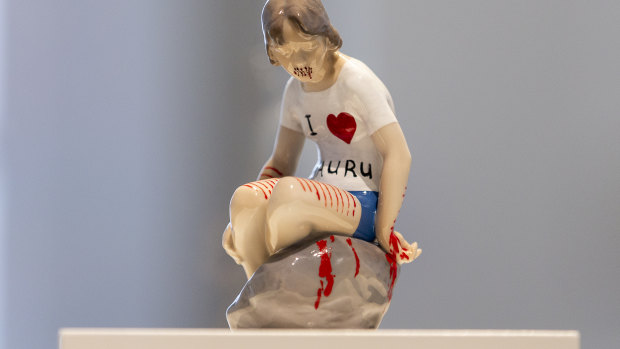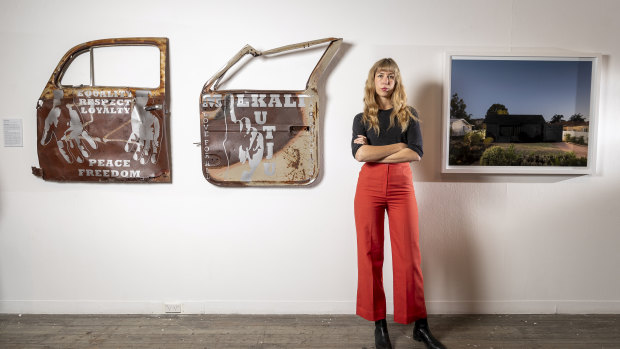This was published 5 years ago
All We Can't See: Australian artists illustrate the Nauru Files
When The Guardian published The Nauru Files - more than 2000 leaked incident reports written by staff in Australia’s detention centre on Nauru between 2013 and 2015 - Arielle Gamble forced herself to read each one.
“When they were published .. they were talked about but no action happened,” says Gamble, the curator of the exhibition All We Can't See.
“I think this is because of the sheer volume of the files and also the language, it is the official language of the system so it is quite impenetrable text.”
According to one, on October 13, 2015 an asylum seeker on Nauru (redacted) approached a case worker (redacted) to report her daughter (redacted) had used something sharp to cut her wrist with.
(Redacted) explained she did not inform anyone of what had happened because (redacted) was afraid of getting in trouble.
“Behind each redacted name is a name,” Gamble says. “There are so many stories, although kids are one-fifth of the population they were over-represented in half the of the files. Each one is horrific in its tragedy.”

I Heart Nauru, Melbourne artist Penny Byrne's contribution to the All We Can't See Exhibition.Credit: Daniel Pockett
Gamble’s background is in book design: “I am used to using images to lure people into stories, sometimes difficult stories.”
And so she decided to invite artists including Ben Quilty, Janet Laurence and Penny Byrne to provide individual interpretations of each of the files.
Melbourne artist Penny Byrne illustrated the file about the daughter (redacted) who self-harmed with a deceptively sweet porcelain figurine of a child wearing an "I heart Nauru" T-shirt.
Look closer though and her arms and legs have been slashed with a razor blade and her lips stitched together.
“It doesn’t appear confrontational but once you realise what is going on it really packs a punch,” Byrne said.
Gamble said the premise of the exhibition – "all we can’t see" – is that most Australians consider themselves decent and compassionate people who would cry out if they knew a child was self-harming because of a policy of their own government.
“It’s been veiled in secrecy from the start. I thought, 'How can I introduce transparency, empathy and accountability'? An image can stop a nation and these files needed images to humanise and connect them with an Australian audience.”

All We Can't See curator Arielle GambleCredit: Daniel Pockett
Gamble said 50 established artists have contributed and the public were also invited to upload responses to the All We Can’t See website.
On Tuesday, August 7 Kurdish Iranian author Behrouz Boochani, who has been detained on Manus Island in Papua New Guinea, will join Iranian photographer Hoda Afshar via Skype as part of the exhibition.
“A lot of Behrouz’s writing is about his confinement within a political context but he uses poetry and prose. One line from his manifesto is that humans have no sanctuary except through other humans,” Gamble said.
“Through so much of his struggle he goes beyond politics and examines humanity. All artworks in this show do that - they all call for humanity.”
All We Can’t See will be at Fortyfivedownstairs until August 11.